LED Lights
Ten years ago, it would have been hard to imagine that this form of lighting could become the most popular source of light for marine hobbyists, aquaculture facilities, and public aquariums. I got together with some industry professionals and pioneers of LED lights to talk in-depth about LEDs: the good and the bad, their past, present, and future, and what improvements we would like to see.
I’d like to introduce you to:
Tullio Dellaquila – Reef Brite. Guru of lighting technologies for our hobby. Speaker at numerous reef conferences like MACNA.
Jay Sperandio – Ecotech Marine. An industry leading, innovative company that has had major influence on changing people’s minds and perception that LEDs can indeed grow corals and in some cases, grow them better than traditional metal halides and T5 lights. Their coralab initiative project researches how to grow corals faster and more efficiently.
Check out the following video to learn more about this fantastic project!
Now, let’s get down to business!!
LEDs have come a long way from their inception.
Let’s talk about our first impression of them, and our change of perception as they have evolved into the lighting powerhouse that they are today.
What makes a light a GREAT light for our aquarium?
Tullio – Spectral composition. This is not to be confused with Color or Kelvin which are different things entirely.
For our purposes (reefing I assume) the spectral composition we are looking for is the composition of wavelengths or frequencies produced in the UV, Visible, and far Red region of the Electromagnetic spectrum as these are what Corals and Plants receive in the wild.
Jay – In my opinion, an aquarium light should:
- Be capable of keeping photosynthetic livestock alive and healthy in the aquarium.
- Make the aquarium beautiful to look at from both a design and light perspective.
There are many options to choose from; what should we look for when we are in market for one?
Tullio – Simplicity, reliability, and of course spectral composition. Being a Murphy’s Law kind of guy, the more parts, gadgets, or features any device has, the more likely points of failure you have. Now, of course, some features can be handy, but you must ask yourself, do these features do anything to improve the performance, quality, or amount of light produced, and is it necessary? One of the keys to a successful system is not only redundancy but simplicity.
Jay – Proven success and after sales support are critical in having a good ownership experience with Aquarium equipment and especially Aquarium lighting.
With advancements in technology, we are able to measure the output of these lights. What are PAR, LUX, and PUR?

Tullio – Let’s start with PAR, also referred to as photosynthetically active radiation. Simply put, this is light, or as I like to put it, energy produced by a light source that typically ranges from 400-700 nanometers that photosynthetic organisms respond to. I would like to add that while PAR can be a useful reference it is not absolute in its ability to gauge, measure, or even compare light sources. This is because while PAR measures light in this region it is unable to measure the spectral composition of the source itself. For example, you could take a High-Pressure Sodium lamp often used for Horticulture and measure the PAR and you would be quite impressed by the reading you get as HPS lamps in general produce very high PAR readings when compared to other light sources. The point is, this is not a lamp you would want to put over your reef aquarium. You can fire a Green Laser at the PAR sensor and also get a high PAR reading. If a high PAR reading alone meant a light source is best then by this thinking we could strap a bunch of Green lasers together, or use an HPS lamp and have an amazing reef tank.
Now let’s move on to LUX. A simple way of looking at it is LUX is that it’s a way of expressing Lumen per square meter. The Lumen is a unit or measurement of light in the visible region based on the Human Eye Response Curve. Like PAR, it tells us little about the photosynthetic nature or spectral composition of the source, which can only be accurately measured with a Spectrometer. The Lumen replaces an older unit or measurement some might be familiar with and that is the Foot Candle sometimes referred to as Candela.
OK, time for P.U.R or Photosynthetically Usable Radiation. I do not know when this acronym became so popularly used but Corals and Plants in general respond to many different wavelengths of light. Just as it is impossible to define spectral composition in one word or term, the same applies to P.U.R. For this reason, I feel it’s use for many applications (Corals and photosynthetic invertebrates for example) can be very misleading.
Jay – This is a very complex question and one not easily answered without a lot of additional caveats. Here’s some basics.
For several reasons that become evident with investigation as to what different light measures mean and their implications for coral as a photosynthetic organism – PAR has become the most common means of measuring light output in the aquarium industry (LED fixtures), and light requirements for livestock in the aquarium hobby. PUR would be a spectrum-specific measurement of PAR, but refers to the spectral component that is used by the organism. I could be incorrect, but PUR may not be identical for all species of coral. Values of PAR and PUR are both expressed as energy received over 1 square meter during one second, so are limited as measures in that they may not account for spectral mix or photoperiod duration.
DLI as a measurement (which is PAR plus photoperiod) does account for PAR combined with photoperiod, however does not factor in spectral mix. In all cases, spot readings must be taken as PAR, PUR, DLI are all going to vary depending on tank location.
Most discussions involving light intensity and duration should be done within the context of a fixed spectrum or else they could be misleading.
In terms of targets – ranges and information exist – but lighting intensity, duration, and spectrum may also impact results.
Ultimately, with more research being done throughout the industry, more and better guidelines for achieving lighting success will become available.
How is it important in our aquarium? What light parameters should we keep track of and what are the numbers that we should try to have and maintain?
Tullio – Ah, the magic number or Pandora’s box if you will. I have a secret to share with you. Regardless of what many may think or claim there isn’t one. For starters, corals by nature are programmed to survive which means they are designed to adapt within reason to many different conditions, lighting included. I have seen thriving corals (SPS included) under many different light sources, intensities, and lighting conditions. Also, in the wild, corals of the same species receive many different levels of light at varying depths. For example, when a storm hits and a piece of Table Coral breaks off, it often falls to the bottom or base of the parent or colony. There, it usually receives considerably less light, but if the right conditions exist, it will grow and thrive. Also, light is only part of the picture. Overall health, water parameters, and nutrient/food availability also play an equal if not more important role in their survival and overall health.
We all know metal halide was the king back in the day, and the LED was the new kid on the block with vast promises. Times have changed and LEDs are now the most popular form of lighting for our hobby. Do you think the LEDs have improved enough to truly overtake that title? Or do you think they still have a way to go before claiming the throne?
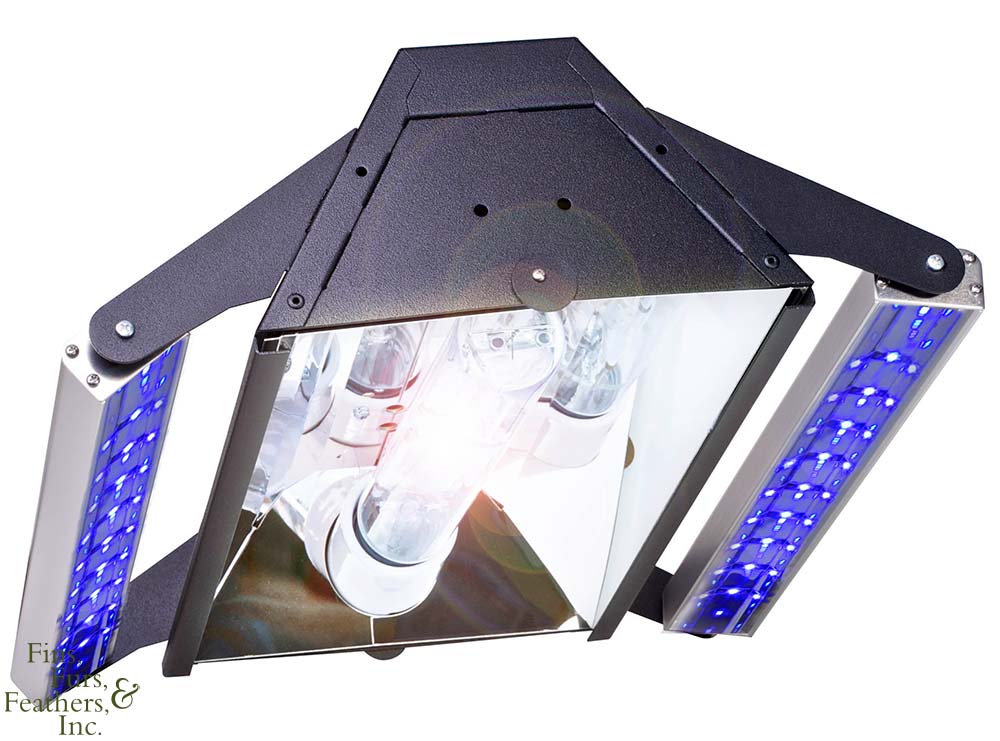
Tullio – Despite popular belief, pound for pound, halide systems are still a very viable contender. Not to mention their proven success for decades on many well-known systems. This is due in most part to the way the light is produced and the overall spectral composition when compared to other light sources. Also, watt for watt, LEDs use as much power as halides. Plus, when you look at overall optical efficacy for photosynthetic purposes, halides again are a very viable and competitive option. LEDs degrade over time, so whether you are replacing lamps once a year or a fixture every 5 or so years, in the end it pretty much works out to be the same total cost of ownership. The advantage with halides aside from spectral composition? Every year when you replace your lamps you are restoring your initial luminous output, whereas LEDs continue to degrade over time. It can happen so slowly that unless you are constantly monitoring light levels with a PMK or similar device, you may not even notice an issue until you see it affecting the corals and other photosynthetic organisms in the system. I see hobbyists devote a lot of time and money to maximize growth and other factors of their systems. Many of the systems I see require the owners to regularly service a lot of the equipment on their systems, so I don’t understand why replacing lamps has become such a taboo.
Jay – LED technology has a lot of advantages over previous technologies, including halide. It is more compact, is more efficient for most lighting purposes, does not require bulb changes, produces less heat, is inherently controllable, and is generally more flexible and dynamic. Additionally, LED manufacture and disposal has less impact on the environment than some other lighting technologies. At this point, LED lighting technology is definitely the standard lighting technology for the vast majority of lighting applications.
There are many different colors of diodes that have come out in recent years. Have enough colors come out so that it’s comparable to metal halides, or do we still need more colors and ways to go?
Tullio – For starters, I often hear the term diode used when referring to LEDs. While there are certain similarities, a diode and a visible diode or light emitting diode do have differences, not only in their construction, but also in their use. So visible diode or LED is the correct term when discussing light sources. As for the range of colors, this opens a completely different can of worms because color and spectral composition are also two different things. In fact, they are often mixed up or confused by hobbyists and professionals alike, when in fact, scientifically they do not belong in the same sentence. Color, color temperature (also known as Kelvin), CRI all tell us nothing about the spectral composition, or quality of light if you will, for our intended application. They do tell us how objects appear to the human eye. The human eye and corals respond to light differently, which is why I have said for years that the human eye is not the best tool when evaluating light sources for photosynthetic applications. When you consider that most photosynthetic organisms respond to light in a very broad range of the electromagnetic spectrum it would require numerous wavelengths (a few hundred at least) balanced correctly to even begin to replicate the light received by corals from sunlight in nature. Therefore, halides still make a great light source for many systems since they produce light very similar to sunlight with a very broad range of wavelengths emitted, including UV.
Jay – At this juncture, white LEDs provide full spectrum light, akin to a white metal halide or T5 bulb. There are many different white LEDs that have slightly different spectral profiles to provide different visual outputs, eg. warm, cool, soft, etc. (different Kelvin ratings). In addition, there are many different narrow-spectrum LED diodes that produce outputs in narrow spectral ranges throughout the PAR range and even in UV and IR.
Currently, there is far more ability to create light outputs and manipulate spectrum using clusters or groups of LEDs than with any other lighting technology.
Lenses. We know with LEDs, lenses play big factor. They have been evolving along with the diodes themselves and play a crucial role in growing corals by distributing the lights evenly and sending them. Have they improved to a point where they can go toe to toe with metal halide or T5 systems with great reflectors?
Tullio – While the design, use, and application of optics and LEDs in general has improved over the years, it is still difficult to replicate halide or T5 light sources. To be fair, this has less to do with the quality and performance of LEDs or T5s, and more to do with the different way in which each of these light sources produce light. LEDs are fantastic for many reasons but lighting in general, at least professionally, is like having a tool box. Each tool is designed for a purpose. As I stated earlier, I have seen amazing tanks under many different light sources. In my opinion, as a general statement there is no best light source. You must look at the application and then begin to choose which tool (light source) is best based on many factors.
Jay – The simple answer to this is yes. In terms of area of the fixture vs. area of coverage, current LED fixtures perform as well to much better than other types of lighting. Factor in wattage and resulting PAR, and that is absolutely true.
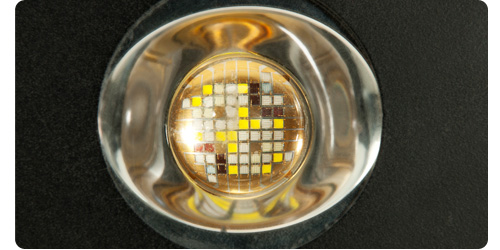
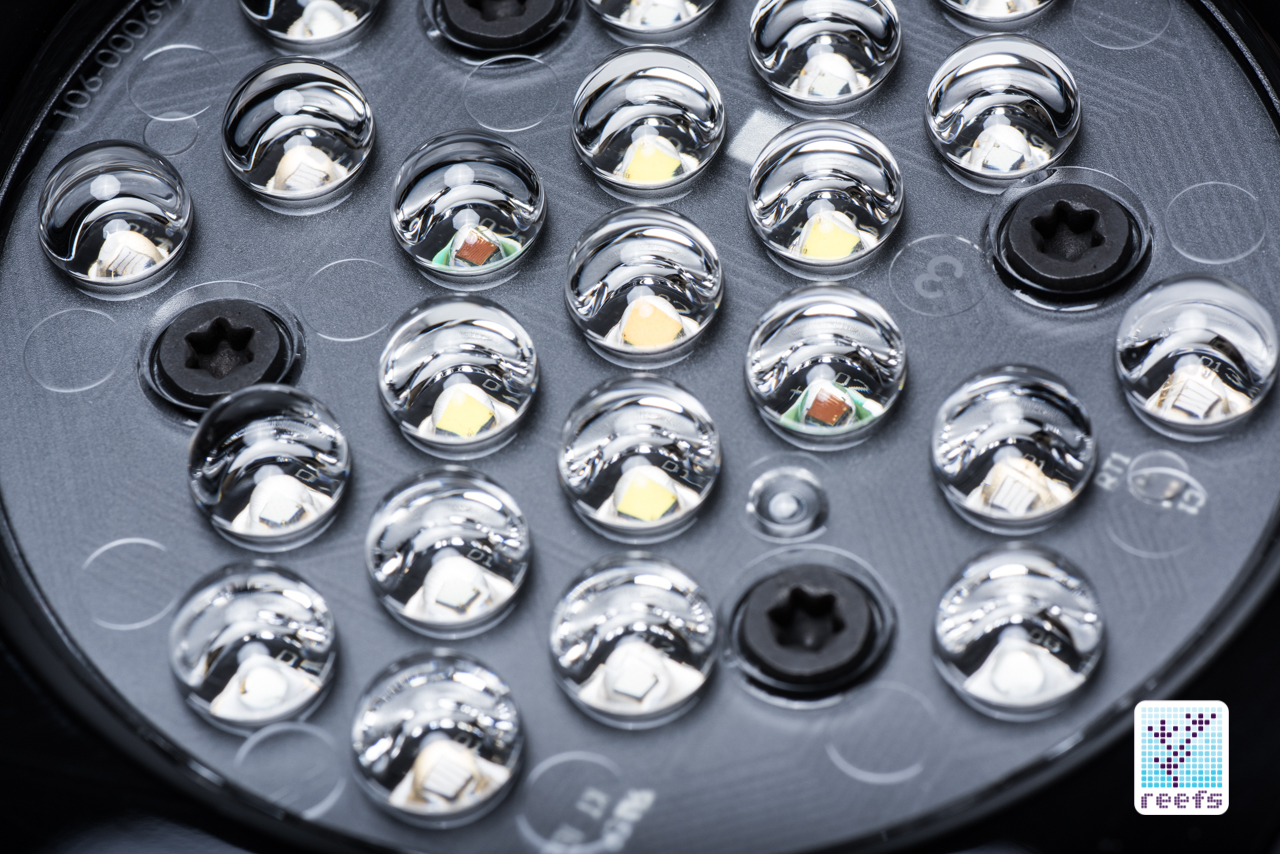
Are hot spots from the LED lens now a thing of the past? I see lights utilizing better lenses that promote even distribution of PAR across the tank with many of the premium brands in our industry. Some fixtures are having no lenses on their LED fixtures. What are your thoughts on that?
Tullio – Again, another can of worms. We could easily fill this entire conversation on optics alone. Optics, like tools, have different purposes and certain tools are better suited for a given application or purpose than others. For example, in general lighting you can go to a hardware store and purchase a spot light or a flood light. The light sources themselves, assuming they are of equal wattage, are pretty much identical. The difference is the treatment of light produced from the source itself. They each have their intended purpose in which they will work best, depending on the given application. This is mostly determined by the distance of the light source to the object being illuminated and/or the desired effect the user is looking for.
The same holds true for aquariums. Optics are very similar in this fashion, collimating light based on the beam angle of the optic itself. Distance from the source to the object being illuminated determines the best beam angle or angles for a given application. A diffusion optic or lens works based on the amount of diffusion desired and scatters the light hitting the diffuser accordingly. Do the new diffusion optics help spread light and minimize hot spots? In general, the answer is yes. Do the new diffusion optics replicate the way T5 lamps or other light sources produce light emitted from a fixture? That may be stretching it a bit, but if that is what the user is after, then diffusion optics would certainly be a better option than no diffuser.
But it will come at a cost. One, there will be light loss which can easily be adjusted for. This can be done by taking a PAR reading of the fixture before the diffuser is installed and then taking one afterwards. Then, you simply adjust the overall intensity until you get a PAR reading that matches the reading you got before you installed the diffuser. The key here is having the PAR sensor in a fixed location for all your readings. Another drawback of a diffuser is it will reduce the amount of shimmer produced. There is not a one size fits all or one is best. Another viable option which we are seeing more and more is no optic at all. This can have its advantages and disadvantages as well, based on the application and desired effect. Too often I see comparisons being made as if we are talking in absolutes. What works best for one application may not be the best for another.
Jay – Lenses modify the focus of light coming from a LED or LED group. The geometry of a lens dictates the effect it will have on the emitted light. Initially, when LED technology struggled to deliver the efficacy needed for coral, good lens design focused output to provide sufficient PAR to grow coral under the fixture. As LED technology has evolved and increasingly higher PAR is not needed, good lens design has switched to both focusing and then dispersing light to provide more even coverage and color mixing while preventing wasting light energy at angles that do not illuminate the tank.
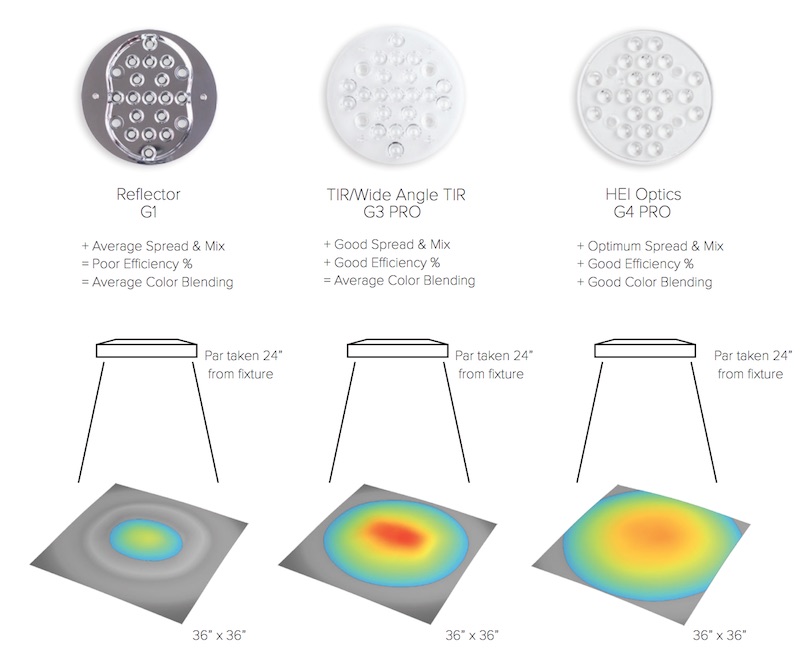
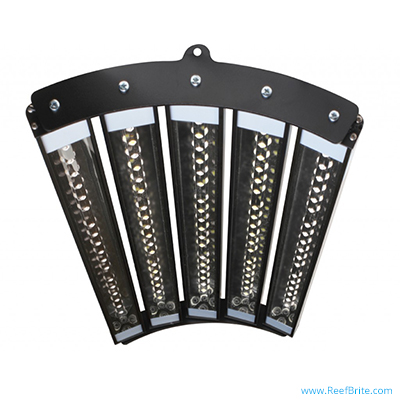
Reefbrite removed additional optic that sits on top of the LED diode itself. This has been going on with several manufacturers both in Germany and in U.S.
Giesemann is a prime example of this.
LEDs certainly got the shimmer of metal halides down. Some may argue that it’s bit too much. I have seen companies like Kessil and Ecotech coming out with diffusers. Jay, what was your thought process when you were creating this? Will you be including this in your future fixtures as an out of box purchase?
Jay – With a point light source, eg. a halide bulb or an LED cluster, you will get shimmer. With a cluster of different colored LEDs you will get some degree of color separation as well. Whether this bothers coral or not is a matter of debate but there are a lot of very successful radion and Hydra users who have grown coral from small frags whose tanks would suggest not. However, what is clear is that people’s visual preference varies widely, and a diffuser can serve to reduce shimmer, further balance PAR, and reduce color separation. So the creation of a diffuser simply adds flexibility to the light output of the fixture for people who see the result as a desirable modification. In the case of the radion XR15 and XR30, the diffuser is an accessory and not an integral or necessary part of the fixture – or its successful performance – so it will remain a separate accessory.
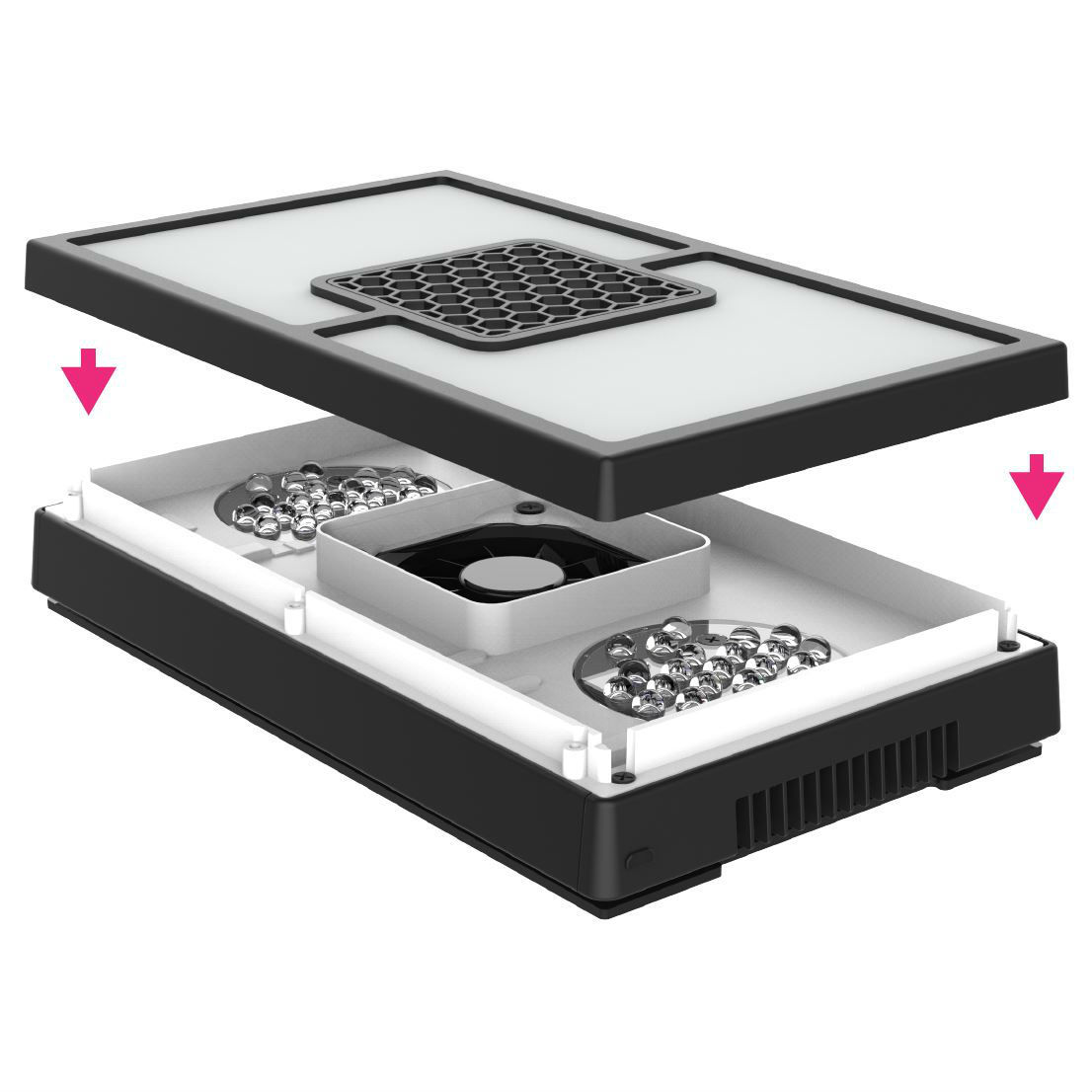
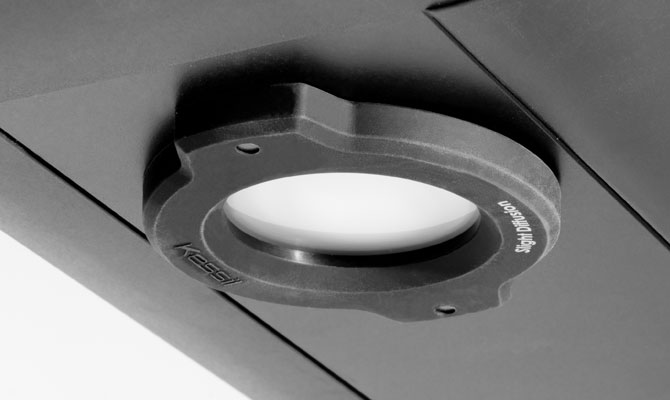
Summarizing, what are the Pros and Cons of LEDs so far?
Tullio –
Pros: They can be very compact, controllable/dimmable, and easily mounted
Cons: Due to the electronics required to operate them and their overall construction, they’re less tolerant of high ambient temperatures, salt spray, or moisture.
Jay –
Pros: Efficient
Small form factor
Controllable
No bulb replacement
Additional features (eg. Cloud cover)
Lastly, as manufacturers, what kind of innovation would you like to see from LEDs down the road?
Tullio – LEDs have come a long way, and ironically, a lot of the so-called innovations have been around for quite some time. The real future for LEDs lies in improved construction of the devices themselves. The key is being able to extract more light, improving their overall efficacy.
Jay – In terms of fixtures, or in terms of the underlying diode technology: better color mixing, wider spread, easier programming, better understanding of the impact of light on coral, and more technological options.










0 Comments